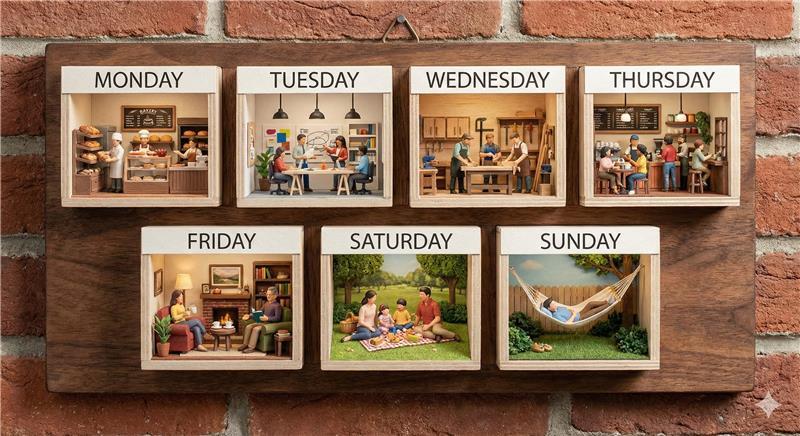How to Know If a Four-Day Workweek Is Right for Your Business
The four-day workweek has become one of the most talked-about workplace shifts of the last decade. Large corporations are experimenting with it....
3 min read
 Anne Becker
· August 14, 2023
Anne Becker
· August 14, 2023

Setting menu prices for your restaurant is tough work. While to your customers these prices might feel arbitrary, a good menu will have up to three different pricing strategies going on at once. How you come to your menu prices should be based on three main strategies: Cost-plus pricing, value-based, and dynamic pricing.
Boiled down to its most basic, a restaurant pricing strategy are tactics restaurants use to set prices for their menu items. While some experts out there will divide these into four main strategies, we feel like there are three big ones that should inform whatever decision you make re: your menu. We’ll go over these in order of importance.
Cost-plus pricing is a big one, as it requires your books to be in order. We want to know the money going into each dish so that we can decide on a profit margin that makes sense for your pricing. At its most basic, cost-plus pricing refers to setting menu prices by calculating the total cost of preparing a dish: that includes ingredients, labor, and other variable costs. Then you’ll figure out a predetermined profit margin to arrive at the selling price.
For example, if a dish costs five dollars to make and a restaurant wants a 30% profit margin, the calculation would be $5 + ($5 X .30) = 5 + 1.50 = $6.50. Cost pricing is a super important place to start because it ensures that every dish sold covers its production costs and contributes to the restaurant’s profitability.
We see most restaurants have at least a 30% profit margin, but that’s not the only thing that will go into your pricing. Let’s talk value, specifically as how it is perceived by your potential customers.
Value-based pricing takes a little more research, it involves determining the perceived value of the dining experience and the dishes your restaurant offers by the customers. After all, restaurant dining isn’t a necessity, it’s a luxury and many people treat it as such. Does your restaurant offer anything special in terms of ambience or service quality? Maybe you create unique flavors or dishes that your customers can’t get anywhere else. Those things represent a premium for your product.
Value-based pricing allows restaurants to have different customer segments. Some might be there for your good deals, happy hours, and the like – while others are there for your signature items. Some folks will just pay more for a premium experience.
This doesn’t just have to do with what’s happening inside your restaurant. Demographics are important too. Food pricing is higher in big cities, of course.
If you're accustomed to ordering takeout in the Midwest, for instance, and you travel to New York City and order that same meal, you might experience some serious sticker shock. Now, that doesn’t mean that the restaurant in The Big Apple is priced the wrong way – it's just that it's a bigger city with a different demographic than suburban Illinois. It’s a great example of how value-based pricing is so important.
Dynamic pricing is the “final level boss” of pricing strategies. For it, you need to have real-time data coming from either your CPA or QBO to make accurate decisions. Why? Well, Dynamic pricing in the restaurant industry involves adjusting menu prices based on real-time factors like peak hours, seasonal availability of menu items, special events, and even demand fluctuations. For example, if you know when off-peak hours are going to happen, you can create specials or lower prices so that you can bring in more folks who love value.
On the other hand, if it's a busy weekend or holiday, prices might be increased to capitalize on the increased demand. We need to stress: this type of pricing can only happen if your money is mapped out – you need to know where your customers are, how much each dish costs to make, and how much you’re making in profit. Those decisions can only be made after you have your finances in order.
.jpg?width=740&height=296&name=restaurant%20owner%20with%20accountant%20(1).jpg)
Use inventory modules to track changes in food cost, review your menu semi-annually, and work with an accountant to be sure you understand your finances and costs.
While these are the main strategies used for setting restaurant menu pricing, there may be other legal or regulatory considerations you should be aware of for setting menu prices or running a promotional campaign. Some municipalities have NO regulations, while others might put a limit on how long or how many days you can have happy hour pricing.
If you have more questions about how to get pricing right for your restaurant, don’t be afraid to reach out to your CPA.
Don’t have a CPA? Book a discovery call and let's see if we're the right fit for your business.

The four-day workweek has become one of the most talked-about workplace shifts of the last decade. Large corporations are experimenting with it....

We've all seen the headlines. Another major company announces that everyone needs to be back at their desk. No exceptions. And if you're running a...

If you work with a payroll provider for your small business, payroll typically runs on a set schedule with very little day-to-day involvement from...